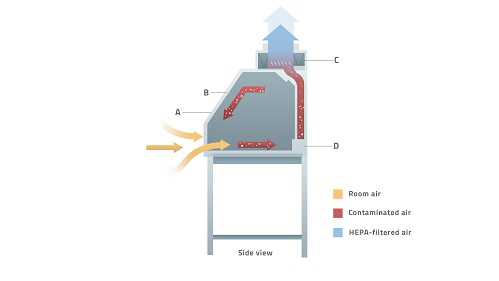Biosafety cabinet class I
This BSC has the basic requirements for safety work in a laboratory. It protects the operator and environment from exposure to aerosols derived from the sample inside the cabinet, but it does not protect the sample itself from contamination.

Figure: Biosafety cabinet class I. A: front opening, B: window/ viewing panel, C: exhaust HEPA, D: exhaust plenum
A stream of air moving inward into the cabinet contains aerosols generated during the experiment. It passes through a filtration system that traps all airborne particles and contaminants. Finally, clean, decontaminated air is exhausted from the cabinet. This means that you don't need to use the night panel, since you are protected by the air drawn into the cabinet. Additionally, the side panel should be on, since this will increase the flow of air into the front part of the cabinet.
In hybrid biosafety cabinets class I/III, the inlet HEPA filter on the side of the cabinet is closed.